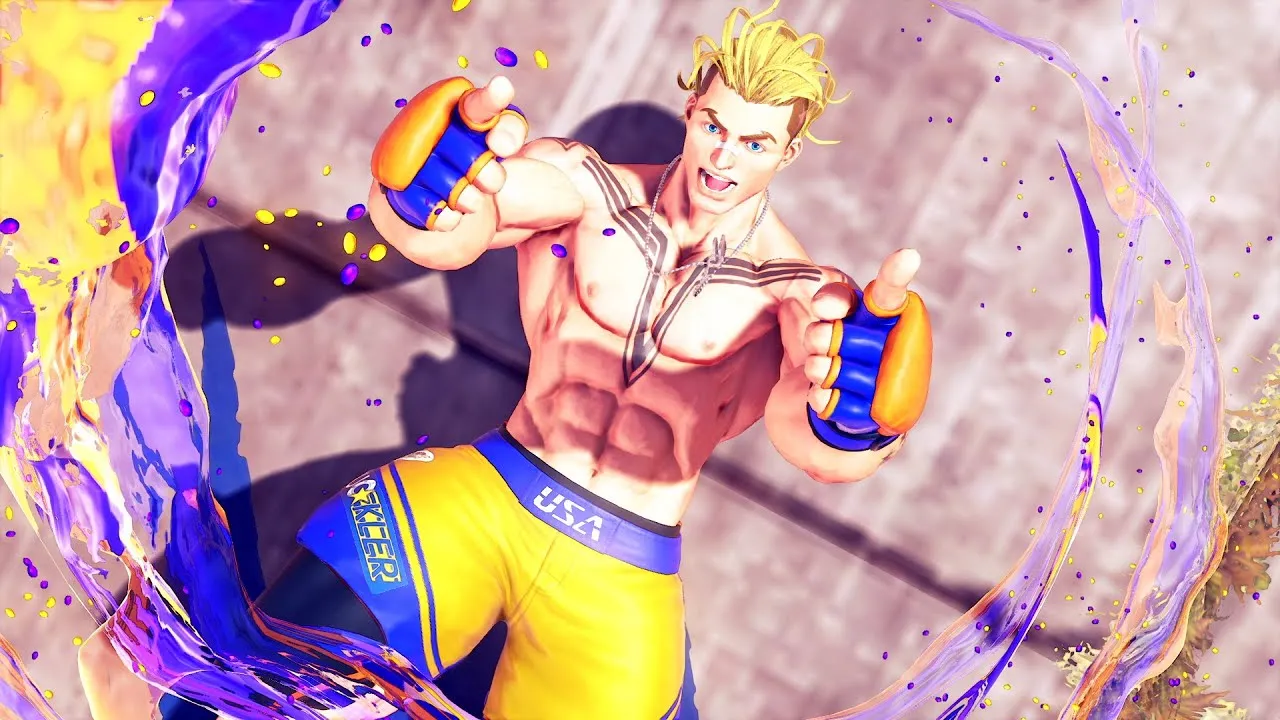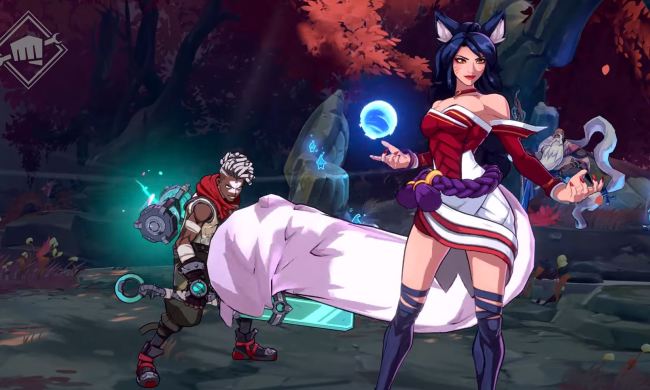When it comes to video game genres, fighting games tend to be a step behind the curve. The fact that it took an entire pandemic for developers to finally look into better netcode for fighters speaks volumes.
At an even more basic level, the way fighting games operate has been called “archaic” by players who feel that the genre is in need of a switch-up to make them more accessible to modern, mainstream audiences. One of the fighting game community’s main talking points at the moment is free-to-play (FTP), a popular business model that fighting games have largely shied away from, even as games like shooters find success with the practice. If the genre wants to remain competitive in today’s modern landscape, it may need to make that pivot soon — but it’s not as simple as it sounds.
The barriers of the genre
A part of the perceived “need” for the change comes from the sheer number of fighting games out there right now and on the horizon. Maximilian “Dood” Christiansen, a high-profile fighting game content creator, has studied and enjoyed the genre for decades and follows this mindset.
Christiansen has previously noted that older fighting games were able to stay relevant due to a lack of options in the past, which meant one game could hold a player’s attention more easily. Today, there’s a larger variety of quality titles to choose from. However, each brings its own extra costs, from the price of the game itself to DLC to subscriptions that allow players to fight online. Fighting games are expensive enough as is, so your average player isn’t likely to invest in several games simply out of curiosity.
“Most fighting games are gonna result in the same problem until there’s big sales, expansions, or a reason to check out an old thing, because a new thing is really cool,” Christiansen states in a video titled “Please make fighting games free to play“. “But there’s always the barrier, right? You have to pull out your wallet and spend money. If you didn’t have to do that and shit was just free and you can just fire it up and try it, then of course you’re going to find people. That game will always have people playing.”

That paralysis of choice leads to another major problem that Max also brings up: Massive skill gaps. If you’ve ever gone online with older fighting games as a new player, there’s a 90% chance you’ll run into a veteran who can destroy you as they make a sandwich, brush their teeth, and update their LinkedIn account at the same time. For many, it can make games feel “unfair” for new players, creating a barrier to entry.
That’s not to say this issue wouldn’t be a thing with free-to-play fighters as well. However, the nature of this “try before you buy” model would lead to a greatly diverse and potentially ever-growing pool of players at different skill levels. This means more beginners can match up with other beginners instead of being pitted against veterans of the game.
The future of fighters?
A free-to-play model is a proposed solution to those hurdles. Players like Christiansen see going free-to-play as a way to not only keep the initial investing audience around, but to welcome in new players too. That could theoretically reduce the dramatic difference in skill level that new players experience.
Fighting games are expensive compared to a lot of modern multiplayer games (many of which are free-to-play in some way). There’s a chance a new player won’t enjoy the game, but not find out until spending hours learning. One might have the only character they enjoy locked behind DLC, meaning not just paying for the game, but additional content as well. All these barriers are pushed to the sidelines with the FTP model.
While not the most popular with the fighting game community, there are titles that have gone this route. Killer Instinct and the Smash Bros-esque platform fighter Brawlhalla embraced a FTP model. I personally have invested tons of hours into Killer Instinct and found that I love how it handles its model.
When I booted up Killer Instinct for the first time in years, I knew there were only a few characters I was interested in. After researching them, I bought those characters and quickly found my main at a much lower price than purchasing a full fighting game and its DLC. Killer Instinct even allows players to access non-purchased characters as training dummies, which is an ingenious move and something I wish all fighting games would do. It means I don’t have to waste money buying characters I don’t want to use, but need to practice against if I want to stand a chance online.
While it seems similar to the standard fighting game DLC practices, it stands out in an honest manner by allowing curious players to test out two characters for free to learn and find out if they like the game’s engine and mechanics. There’s also a third free-to-use character that rotates throughout the roster on a weekly basis. Implementation such as this gives players the ability to try before they buy. Instead of purchasing an entire package, they can buy the pieces they want. It’s a smart formula for a genre where many only want to play as three or four different characters.
Good implementation of FTP in fighting games can be seen in Brawlhalla, which still boasts 10,000 players online daily, according to Steamcharts. With the upcoming Warner Bros. crossover fighter Multiversus being an FTP fighter with mainstream characters, it may even break those numbers and more records of the genre.
Free-to-play, but not flawless
It all sounds like a slam dunk in theory, but the reality isn’t so simple. Traditional fighting games like Killer Instinct, Fantasy Strike, and Dead or Alive 6 that have gone FTP still haven’t been able to hold on to a consistent player base despite the model. Brawlhalla has found more success, but it features a more casual playstyle akin to Super Smash Bros. rather than something “hardcore” like Street Fighter.
Free-to-play could introduce new issues for the genre too. Professional fighting game analyst, commentator, and once competitor Sajam talks about how games like Fortnite seemingly drop a never-ending well of skins, wraps, effects, emotes, and more to keep players in their wallets and spending in the item shop. While not the case for every fighter, certain fighting game studios just don’t generate the revenue needed to keep up with such a model. The FTP model has also been poisoned by games that tried, and failed, to make the model work.
Wasn’t Tekken Revolution Free to Play In a screwed up way? We had stats that we can improve which changed the gameplay. We also had randomly occurring critical hits that we had no control over
— Rauschka (@Rauschka_tk) April 5, 2022
Games like Tekken Revolution and Dead or Alive 6: Core Fighters left sour tastes in the mouths of community members when they exposed how scummy the model can feel. Tekken Revolution featured pay-to-win stat boosts and only allowed players to fight in five matches at a time unless they bought a ticket to continue. A general lack of content and support for DoA:6 led to its quick death.
There’s also the fact that fighting games tend to be harder than the other competitive games out there. They aren’t made to be easily digestible to a casual audience like Smash Bros. and its clones like Brawlhalla and Multiversus. Just because you make it free to pick up and learn how to do a quarter-circle forward to half-circle back motion, doesn’t mean many will still want to do so. The genre just isn’t as approachable as, say, a shooter — and that’s another hurdle that many fans used to write off FTP.
While there are issues that can come with going free-to-play, it’s still an approach worth exploring. The positives outweigh the negatives and many community members are on board for a game like Street Fighter 6 taking a Fortnite-like approach. Will developers be willing to upend a classic genre so easily? If the long-archaic past and present of fighting games is anything to go by, probably not. But if a major release ever did, it’s possible that others could follow suit.
Many are looking to Riot’s upcoming fighting game, Project L, as the litmus test of the model in the genre thanks to the company’s past with FTP. With its reach, knowledge, and possible support from the fighting game community, it could easily be the game to revolutionize fighters going forward. However, there are a lot of “ifs” in that argument, so we’ll have to see if it can win over the skeptics.



